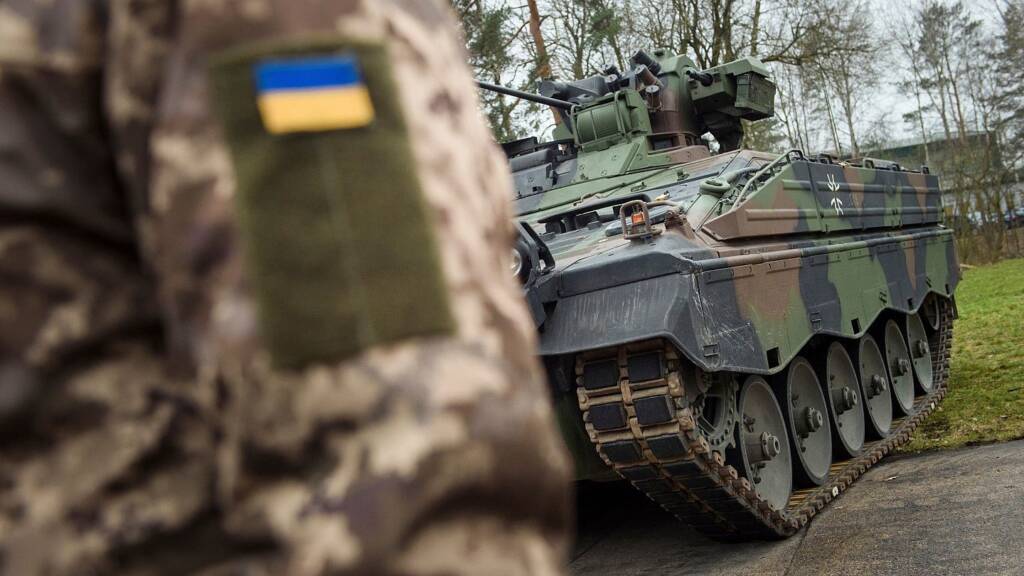Germany has clinched its biggest victory of the year and I am becoming increasingly confident that Olaf Scholz, despite the outward appearance of an idiot, is quite the cunning fox.
European Union diplomats in Brussels agreed on Wednesday to boost aid to Ukraine with a €5 billion deal. This decision, aimed at strengthening the European Peace Facility (EPF), allows for additional funding to support military-related expenditures outside the EU’s standard budget. This move is crucial, especially after the Russian operations, with the EPF being a key vehicle for the EU’s military aid to Ukraine.
Disagreements among member states over financial contributions had previously stalled this process.
Join us on Telegram: https://t.me/tfiglobal
France wanted to limit donations to EU-made military supplies, while Germany pushed for allowing in-kind contributions from outside the EU. The final consensus allows for non-EU sourced military equipment donations if the EU’s defense capacity is insufficient, though with a preference for EU-produced weapons.
The €5 billion EU aid package for Ukraine includes funds for joint military purchases, bolstering EU and Ukraine defense capabilities. A key feature is that member states can offset up to 50% of their contributions with military donations. This allows a €1 reduction for every €2 in equipment donated, with no limit on the deduction amount. Despite this, a state cannot meet half its obligation solely through donations.
Read More: EU Plans to Divert Russian Funds to Ukraine by Summer
During earlier stalled negotiations on military aid, some EU countries began donating equipment to Ukraine independently. This action is now formally recognized, allowing such donations to count towards their EPF contributions. Germany, a major donor, has supplied €17.7 billion in military aid to Ukraine. With its €1.2 billion annual EPF commitment, Germany can avoid monetary contributions by donating at least €2.4 billion in military equipment.
Reports suggest Germany has already met its EPF obligations through such in-kind contributions, indicating it may not make further cash contributions.
So how did Germany meet its EPF obligations? To understand this, let’s go back to the start of the war.
As nations like the United States and the United Kingdom dispatched sophisticated military hardware to support Ukraine, Germany appeared hesitant, offering, instead of armaments, 5,000 military helmets and a mobile hospital.
However, under mounting international pressure, Germany began to dispatch military equipment to Ukraine. The inventory, interestingly, included:
A batch of 700 Strela Missiles, long declared obsolete and corroded from storage, came in mold-infested wooden boxes, necessitating protective gear for inspection.
Leopard 1A5 Battle Tanks which have been out of Bundeswehr service since 2003, these tanks marked Germany’s post-World War II foray into tank development.
Then there were Marder Infantry Fighting Vehicles which were Introduced in 1971 and are being phased out in Germany.
The list also included Gepard Anti-Aircraft Tanks which were discontinued approximately two decades ago.
But there were brand new toys too like the IRIS-T SLM Air Defense Systems. Ukraine received just two units of this system which is not yet operational within the Bundeswehr, and that suggests a field trial rather than a strategic contribution.
Leopard-2 Tanks were the only “decent” weapons provided but their transfer was marred by significant delay and negotiation.
Read More: “EU is BROKE”, declares EU’s Foreign Affairs and Security Policy Chief
And Taurus Long Range Missiles despite expectations have not reached Ukraine and possibly never will.
This eclectic assortment of military aid comprised both dated and untested systems. Germany was just getting rid of its junk and testing untested systems in the name of help. Not that we are complaining.
And the reward for getting rid of junk is €1.2 billion. Smart, very smart.
In terms of overall contributions to Ukraine, the Kiel Institute’s data places Germany at the forefront with €17.7 billion in donations. Denmark and the Netherlands follow with €8.4 billion and €4.4 billion, respectively. In contrast, Italy, France, and Spain have made relatively smaller contributions, amounting to €0.67 billion, €0.64 billion, and €0.33 billion, respectively.
So as Germany will ride the moral high horse and ask others to comply, other nations will begrudgingly donate to this farcical fund.
